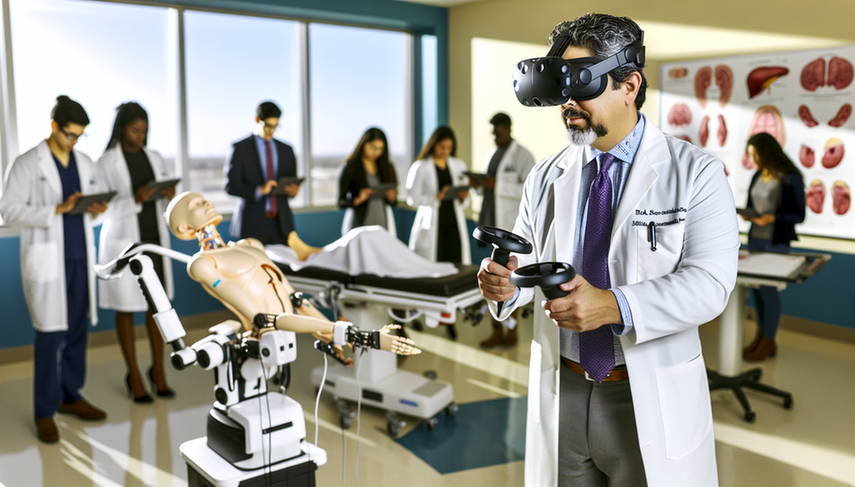Virtual Reality and Robotic Simulators: Enhancing Medical Training and Preoperative Diagnosis with Immersive Technologies

Virtual reality in surgery and robotic simulators are transforming medical training and preoperative diagnosis. These immersive technologies offer new opportunities to enhance surgical precision and patient safety. In this context, we explore how these tools are revolutionizing medical practice and education.
Diving Deeper into Virtual Reality and Robotic Simulators
Augmented and mixed reality has begun to revolutionize orthopedic surgery, allowing surgeons to plan preoperatively and navigate intraoperatively without the use of fluoroscopy. This translates into three-dimensional reconstructions of patient images and the ability to interact remotely with colleagues outside the operating room.
In the field of liver surgery, augmented reality has proven to be safe and effective in both minimally invasive and invasive procedures. This technology allows visualization of vascular and tumor structures during surgery, facilitating precise navigation in complex procedures.
Furthermore, 3D printing and anatomical engineering are integrating with virtual reality to offer personalized treatments, improving preoperative planning and medical training. These innovations enable healthcare professionals to design and develop unique pieces based on medical images, optimizing surgical outcomes.
Conclusions
Immersive technologies, such as virtual reality and robotic simulators, are redefining medical training and preoperative diagnosis. These tools not only enhance the precision and safety of surgical procedures but also provide an interactive and realistic learning environment for healthcare professionals. As these technologies continue to evolve, it is essential for physicians to stay updated and leverage these innovations to improve patient care.
Referencias
- [1] Virtual, augmented, and mixed reality applications in orthopedic surgery
- [2] Minimally invasive and invasive liver surgery based on augmented reality training: a review of the literature
- [3] Anatomical Engineering and 3D Printing for Surgery and Medical Devices: International Review and Future Exponential Innovations
Created 24/1/2025
